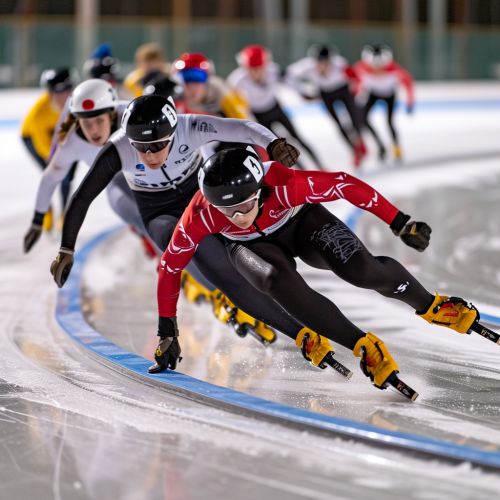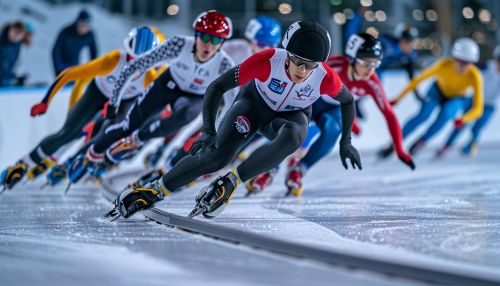Short track speed skating
Overview
Short track speed skating is a form of competitive ice skating in which participants race against each other on an oval ice track. The sport is characterized by its high-speed, close-quarters racing, and requires a combination of speed, strategy, and agility.


History
The origins of short track speed skating can be traced back to the speed skating events that took place in the United States and Canada in the late 19th and early 20th centuries. The sport was officially recognized by the International Skating Union (ISU) in 1967, and the first official world championships were held in 1976. Short track speed skating was included as a demonstration sport in the 1988 Winter Olympic Games, and has been a full medal sport since the 1992 Games.
Rules and Regulations
In short track speed skating, races are conducted with four to six skaters on the ice at a time, with the goal being to finish the race in the shortest time. The track is 111.12 meters in circumference, and races can range from 500 meters (4.5 laps) to 3000 meters (27 laps) for individual races, and 5000 meters (45 laps) for relay races. Skaters are required to wear specific equipment for safety, including helmets, cut-resistant suits, knee pads, neck protectors, and gloves.
Techniques
Short track speed skating requires a unique blend of technical skills. Skaters need to have excellent balance, as they lean into turns with their bodies almost parallel to the ice. They also need to have strong push-off power and the ability to maintain a high speed throughout the race. The ability to strategically position oneself during the race is also crucial, as is the ability to quickly recover from any stumbles or falls.
Training and Preparation
Training for short track speed skating involves a combination of on-ice and off-ice workouts. On-ice training typically involves drills to improve skating technique, speed, and endurance, while off-ice training often includes strength and conditioning workouts, as well as exercises to improve balance and agility. Nutrition and recovery strategies also play a key role in a skater's preparation.
Major Competitions
There are several major competitions in short track speed skating, including the Winter Olympic Games, the World Championships, and the ISU World Cup series. These competitions feature races in various distances, and both individual and relay events.
Notable Skaters
There have been many notable short track speed skaters throughout the history of the sport. Some of the most successful and influential skaters include Apolo Anton Ohno, Viktor Ahn, and Choi Min-jeong, who have all won multiple Olympic medals and set numerous world records.
